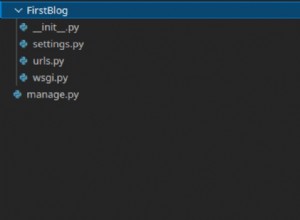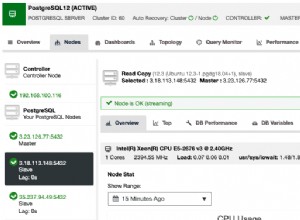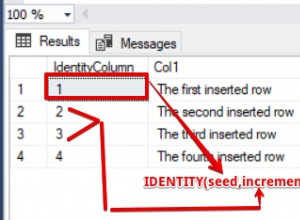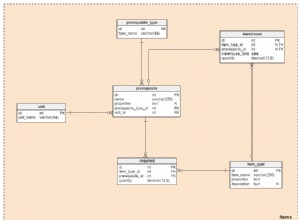Su código nunca cambia los multiplevalues formación. Simplemente cambia cada elemento, luego descarta ese nuevo valor.
Necesita una variable donde pueda agregar sus resultados en:
CREATE OR REPLACE FUNCTION manipulate_array(multiplevalues text[])
RETURNS text[] AS
$BODY$
DECLARE
singlevalue text;
l_result text[] := '{}'::text[]; -- initialize with an empty array
BEGIN
FOREACH singlevalue IN ARRAY multiplevalues LOOP
SELECT trim(regexp_replace(singlevalue, '\s+', ' ', 'g')) INTO singlevalue;
l_result := l_result || singlevalue; -- append to the result
END LOOP;
RETURN l_result; -- return the new array, not the old one
END;
$BODY$
LANGUAGE plpgsql VOLATILE
COST 100;
Pero esto se puede hacer un poco más simple usando unnest y array_agg y una función SQL simple (en lugar de PL/pgSQL)
Primero debe anular la matriz, recortar los valores y el agregado que vuelve a formar una matriz.
No estoy seguro de entender lo que está tratando de hacer, pero esto recortará todos los valores dentro de la matriz y devolverá uno nuevo:
create function trim_all(p_values text[])
returns text[]
as
$$
select array_agg(trim(regexp_replace(t.v, '\s+', ' ', 'g')) order by t.nr)
from unnest(p_values) with ordinality as t(v, nr);
$$
language sql;




